Intro
Discover what a callus is, its causes, and removal methods. Learn about callus formation, symptoms, and treatment options, including home remedies and medical procedures for foot callus and hand callus care.
A callus is a thickened area of skin that has been subjected to repeated pressure, friction, or other forms of irritation. This can occur on various parts of the body, such as the hands, feet, or anywhere else that is prone to stress and abrasion. Calluses are essentially the body's natural response to protect itself from further damage by building up a layer of dead skin cells. They can be uncomfortable and sometimes painful, especially if they become too thick or are located in areas that bear weight or are subject to constant friction.
Calluses are different from corns, which are smaller and typically have a harder center. While corns usually occur on the tops or sides of the toes, calluses can appear anywhere on the foot, including the heel, ball, or the underside of the toes. They can also appear on the hands, particularly on the palms or fingers, often as a result of repetitive activities such as writing, using tools, or playing musical instruments. Understanding what calluses are and how they form is crucial for prevention and treatment.
The formation of calluses is a gradual process that involves several layers of skin. The outermost layer, known as the epidermis, is where calluses develop. As the skin in a particular area undergoes repeated stress, the cells in the epidermis start to multiply and thicken to provide extra protection. This thickening can lead to the formation of a callus, which, while protective, can sometimes cause discomfort. Calluses are generally harmless but can be a sign of an underlying issue, such as poorly fitting shoes or an abnormal gait, which may need to be addressed to prevent further complications.
Causes of Calluses
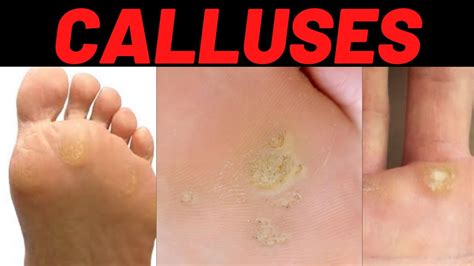
Calluses are caused by repeated friction, pressure, or irritation to the skin. This can happen for a variety of reasons, including poorly fitting shoes, abnormal gait, or repetitive actions with the hands. For instance, individuals who engage in activities that involve a lot of walking, running, or hiking may develop calluses on their feet due to the constant pressure and friction. Similarly, musicians, writers, or laborers may develop calluses on their hands due to the repetitive motions involved in their work. Understanding the specific cause of a callus is important for effective prevention and treatment.
Common Causes
Some common causes of calluses include: - Poorly fitting shoes or socks - Abnormal gait or foot shape - Repetitive actions with the hands or feet - Participation in certain sports or activities - Poorly fitted gloves or hand protection - Genetics, as some people may be more prone to callus formationSymptoms of Calluses
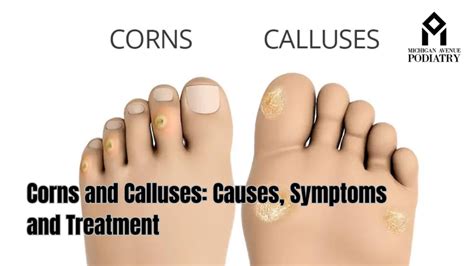
The symptoms of calluses can vary depending on their location and severity. Generally, a callus appears as a thickened, hardened area of skin that may be yellowish or grayish in color. It can feel rough to the touch and may cause discomfort or pain, especially if it is subjected to further pressure or friction. In some cases, calluses can crack, which may lead to pain and potentially become infected if not properly cared for. Recognizing the symptoms of calluses is crucial for seeking appropriate treatment and preventing further complications.
Identifying Calluses
Identifying calluses involves looking for areas of thickened skin that may appear different from the surrounding skin. Key signs include: - A hardened, thickened area of skin - Discoloration, such as yellowish or grayish hues - Rough texture - Potential for pain or discomfort, especially with pressure - Possible cracking of the skinTreatment and Prevention of Calluses
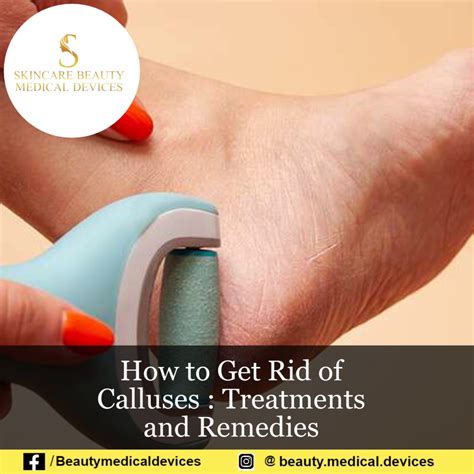
Treating and preventing calluses involves a combination of self-care practices, lifestyle adjustments, and, in some cases, medical intervention. The primary goal is to reduce the pressure and friction that causes callus formation and to remove any existing calluses to prevent discomfort and potential complications. This can be achieved through various methods, including the use of pumice stones or foot files to gently remove dead skin cells, applying moisturizers to keep the skin hydrated and supple, and wearing properly fitting shoes or gloves to reduce friction.
Self-Care Practices
Some effective self-care practices for treating and preventing calluses include: - Regularly moisturizing the skin to keep it hydrated - Using pumice stones or foot files to gently remove dead skin cells - Wearing shoes that fit properly and provide adequate cushioning and support - Avoiding repetitive actions that cause friction - Using protective gear, such as gloves, when engaging in activities that may cause callus formationComplications of Untreated Calluses
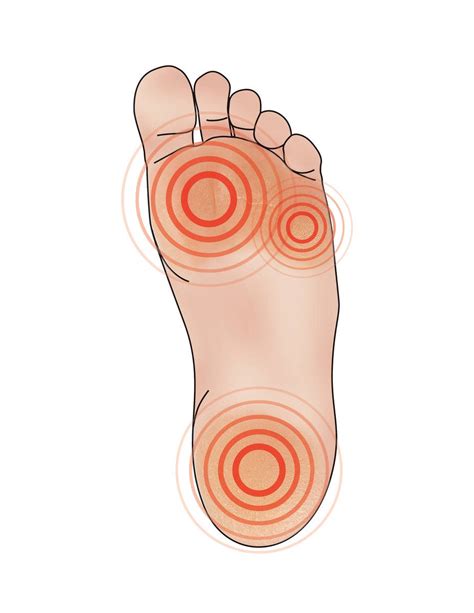
Untreated calluses can lead to several complications, including increased pain, infection, and potentially more serious conditions if the callus cracks and becomes infected. Furthermore, ignoring the underlying causes of callus formation, such as poorly fitting shoes or abnormal gait, can lead to more severe issues like foot or hand deformities over time. It is essential to address calluses promptly and to take preventive measures to avoid these complications.
Potential Risks
The potential risks of untreated calluses include: - Increased pain and discomfort - Infection, especially if the callus cracks - Formation of deeper or larger calluses - Potential for foot or hand deformities if underlying causes are not addressed - Impact on mobility or ability to perform daily activities due to pain or discomfortProfessional Treatment for Calluses
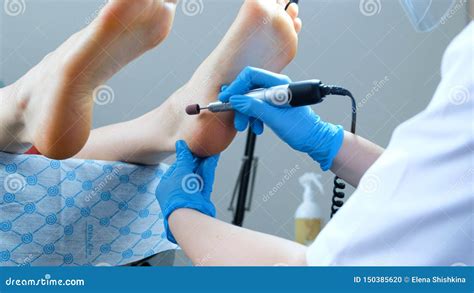
In some cases, professional treatment may be necessary for calluses, especially if they are severe, painful, or do not respond to self-care practices. Professional treatments can range from debridement, where a healthcare professional removes dead skin cells, to the use of orthotics or shoe inserts to redistribute pressure and alleviate friction. In rare cases, surgical intervention may be required to correct underlying issues that contribute to callus formation.
When to Seek Professional Help
It is advisable to seek professional help for calluses if: - They are severely painful or interfere with daily activities - Self-care practices do not provide relief - There are signs of infection, such as redness, swelling, or pus - The callus is deep or large and does not respond to self-treatment - Underlying conditions, such as diabetes, require special care to prevent complicationsHome Remedies for Calluses
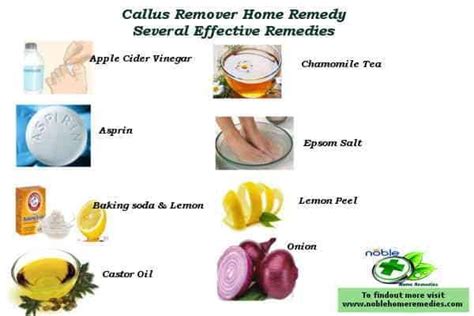
Several home remedies can help in the treatment and prevention of calluses. These include using baking soda, vinegar, or Epsom salts in foot soaks to soften the skin, applying castor oil or tea tree oil to help moisturize and protect the skin, and using banana peels or lemon juice to soften calluses. It is essential to be patient and consistent when using home remedies, as they may take time to show results.
Natural Treatments
Some natural treatments for calluses include: - Soaking the feet in warm water with baking soda or Epsom salts - Applying moisturizers or oils, such as coconut oil or olive oil, to keep the skin hydrated - Using a pumice stone or foot file to gently remove dead skin cells - Wearing socks made from natural fibers, such as cotton or wool, to reduce frictionConclusion and Future Directions

In conclusion, calluses are a common condition that can cause discomfort and pain if not properly managed. Understanding their causes, symptoms, and treatment options is crucial for effective prevention and care. By adopting self-care practices, considering professional treatment when necessary, and exploring home remedies, individuals can manage calluses and prevent their recurrence. Future directions in the management of calluses may involve the development of new treatments and technologies that can more effectively prevent callus formation and provide relief for those affected.
Looking Ahead
Looking ahead, the management of calluses will likely involve a combination of traditional practices and innovative technologies. This may include: - Development of advanced materials for shoes and gloves that reduce friction - Creation of new moisturizers and skin care products that are more effective in preventing callus formation - Advancements in medical treatments, such as more precise debridement techniques or new medications for pain management - Increased awareness and education on the importance of preventive care for callusesWhat are the primary causes of calluses?
+Calluses are primarily caused by repeated friction, pressure, or irritation to the skin, which can occur due to poorly fitting shoes, abnormal gait, or repetitive actions with the hands.
How can calluses be prevented?
+Preventing calluses involves wearing properly fitting shoes, using protective gear such as gloves when necessary, and engaging in regular self-care practices like moisturizing the skin and gently removing dead skin cells.
What are some common home remedies for calluses?
+Common home remedies for calluses include soaking the feet in warm water with baking soda or Epsom salts, applying moisturizers or oils, and using a pumice stone or foot file to gently remove dead skin cells.
We hope this comprehensive guide to calluses has been informative and helpful. If you have any further questions or would like to share your experiences with calluses, please do not hesitate to comment below. Your insights and stories can provide valuable support and advice to others dealing with similar issues. Additionally, if you found this article useful, consider sharing it with friends or family who might benefit from the information. Together, we can promote better understanding and management of calluses, enhancing the quality of life for those affected.
